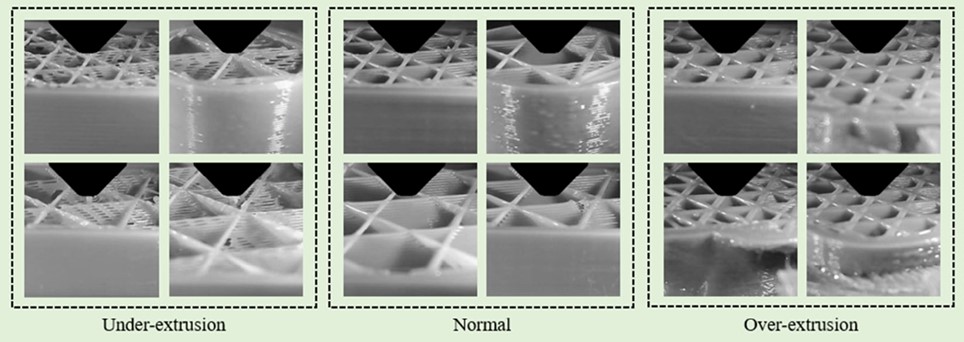3D printing can be corrected in real-time by machine learning
Machine learning is used to minimize waste and optimize the structure of 3D printing.
3D printing technology is quickly expanding to more industries including medicine, aerospace technologies, food, and many other. It makes manufacturing quicker, cheaper, and much more reliable.
This method of production can result in a shortage or excessive amount of material after printing. The printed object could be too fragile if not enough material is used. A high flow rate of material can cause imperfections in printed samples and cost you more money.
Woo Soo Kim, from Simon Fraser University in British Columbia (Canada) has created a 3D printing system that addresses this problem and makes 3D printing more efficient. in situ Control and correction for material consumption
The scientists used fused deposition modelling, which is a 3D printer that prints layers by layer and deposits melted material in the form filaments. The quality of the printed object is determined by the flow rate of material out of a specialnozzle. There may be a different optimal rate at different stages. In these cases, it can lead to the above problems.
To automatically control and regulate the material flow rate when printing individual components — which in the present study was a plastic dog bone — the researchers turned to machine learning. The researchers used data analysis to control manufacturing processes to identify patterns and make predictions.
The 3D printer’s camera captured the printing process and sent the data to the computer. If the plastic flow rate was not optimal, the machine learning algorithm was able to adjust the process in real-time.
This works great on paper but scientists had to experiment with the algorithm. The scientists printed samples at various extrusion rates.

The results of the printed sample were impressive in terms of their parameters. Compared to printing with the control algorithm, the new method resulted in a higher sample strength of up to 200%. This could be critical in many mechanisms and a 40% reduction in material.
Scientists believe that there is still room for improvement despite all the positive progress.
They believe their method is compatible with fused deposition modeling as well as other 3D printing methods. You can control the material flow rate in real time. This is also possible for other parameters such as the temperature. You can improve the printing pattern by increasing the size data set that the program uses to train it and making frequent quality checks.
Like all applied science predictions, further research and their implementation in industry will confirm or disprove these claims.
Reference: WooSoo Kim et.al., Adaptive 3D Printer for In Situ Adjustment Mechanical Properties, Advanced Intelligent Systems (2022). DOI:10.1002/aisy.202200229
Minku Kang, Unsplash Image Credit